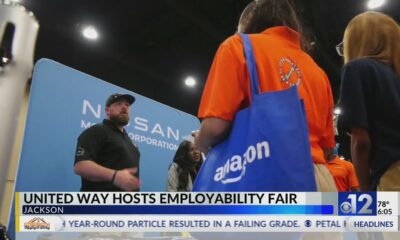Kaiser Health News
Prescription for Housing? California Wants Medicaid to Cover 6 Months of Rent
by Angela Hart
Wed, 22 Mar 2023 09:00:00 +0000
SACRAMENTO, Calif. — Gov. Gavin Newsom, whose administration is struggling to contain a worsening homelessness crisis despite record spending, is trying something bold: tapping federal health care funding to cover rent for homeless people and those at risk of losing their housing.
States are barred from using federal Medicaid dollars to pay directly for rent, but California's governor is asking the administration of President Joe Biden, a fellow Democrat, to authorize a new program called “transitional rent,” which would provide up to six months of rent or temporary housing for low-income enrollees who rely on the state's health care safety net — a new initiative in his arsenal of programs to fight and prevent homelessness.
“I've been talking to the president. We cannot do this alone,” Newsom told KHN.
The governor is pushing California's version of Medicaid, called Medi-Cal, to fund experimental housing subsidies for homeless people, betting that it's cheaper for taxpayers to cover rent than to allow people to fall into crisis or costly institutional care in hospitals, nursing homes, and jails. Early in his tenure, Newsom proclaimed that “doctors should be able to write prescriptions for housing the same way they do for insulin or antibiotics.”
But it's a risky endeavor in a high-cost state where median rent is nearly $3,000 a month, and even higher in coastal regions, where most of California's homeless people reside. Experts expect the Biden administration to scrutinize the plan to use health care money to pay rent; and also question its potential effectiveness in light of the state's housing crisis.
“Part of the question is whether this is really Medicaid's job,” said Vikki Wachino, who served as national Medicaid director in the Obama administration. “But there is a recognition that social factors like inadequate housing are driving health outcomes, and I think the federal government is open to developing approaches to try and address that.”
Bruce Alexander, a spokesperson for the Centers for Medicare & Medicaid Services, declined to say whether the federal government would approve California's request. Yet, Biden's Medicaid officials have approved similar experimental programs in Oregon and Arizona, and California is modeling its program after them.
California is home to an estimated 30% of the homeless people in the U.S., despite representing just 12% of the country's overall population. And Newsom has acknowledged that the numbers are likely far greater than official homeless tallies show. Top health officials say that, to contain soaring safety-net spending and help homeless people get healthy, Medi-Cal has no choice but to combine social services with housing.
Statewide, 5% of Medi-Cal patients account for a staggering 44% of the program's spending, according to state data. And many of the costliest patients lack stable housing: Nearly half of patients experiencing homelessness visited the emergency room four times or more in 2019 and were more likely than other low-income adults to be admitted to the hospital, and a large majority of visits were covered by Medi-Cal, according to the Public Policy Institute of California.
“What we have today doesn't work,” said Dr. Mark Ghaly, secretary of the California Health and Human Services Agency, explaining his argument that housing is a critical component of health care. “Why do we have to wait so long for people to be so sick?”
The federal government has already approved a massive social experiment in California, known as CalAIM, which is transforming Medi-Cal. Over five years, the initiative is expected to pour $12 billion into new Medi-Cal services delivered outside of traditional health care. In communities across the state, it is already funding services for some low-income patients, including paying rental security deposits for homeless people and those facing eviction; delivering prepared healthy meals for people with diabetes; and helping formerly incarcerated people find jobs.
The transitional rent program would add another service to those already available, though only a sliver of the 15.4 million Medi-Cal enrollees actually receive those new and expensive social services.
Rent payments could begin as soon as 2025 and cost roughly $117 million per year once fully implemented. And while state officials say anyone who is homeless or at risk of becoming homeless would be eligible, not everyone who qualifies will receive new services due to capacity limits. Among those who stand to benefit are nearly 11,000 people already enrolled in Medi-Cal housing services.
“The ongoing conversation is how do we convince the federal government that housing is a health care issue,” said Mari Cantwell, who served as Medi-Cal director from 2015 to 2020. “You have to convince them that you're going to save money because you're not going to have as many people showing up at the emergency room and in long-term hospitalizations.”
Health care experiments in California and around the country that funded housing supports have demonstrated early success in reducing costs and making people healthier. But while some programs paid for housing security deposits or participants' first month of rent, none directly covered rent for an extended period.
“Without that foundational support, we are playing in the margins,” Newsom said.
State health officials argue that paying for six months of rent will be even more successful at reducing health care costs and improving enrollees' health, but experts say that, to work, the initiative must have strict accountability and be bundled with an array of social services.
In a precursor to the state's current initiative, California experimented with a mix of housing assistance programs and social services through its “Whole Person Care” pilot program. Nadereh Pourat, of the UCLA Center for Health Policy Research, evaluated the program for the state concluding that local trials reduced emergency visits and hospitalizations, saving an average of $383 per Medi-Cal beneficiary per year — a meager amount compared with the program's cost.
Over five years, the state spent $3.6 billion serving about 250,000 patients enrolled in local experiments, Pourat said.
And a randomized control trial in Santa Clara County that provided supportive housing for homeless people showed reductions in psychiatric emergency room visits and improvements in care. “Lives stabilized and we saw a huge uptick in substance use care and mental health care, the things that everybody wants people to use to get healthier,” said Dr. Margot Kushel, director of the University of California-San Francisco's Center for Vulnerable Populations at Zuckerberg San Francisco General Hospital and Trauma Center, who worked on the study.
But insurers implementing the broader Medi-Cal initiative say they are skeptical that spending health care money on housing will save the system money. And health care experts say that, while six months of rent can be a bridge while people wait for permanent housing, there's a bigger obstacle: California's affordable housing shortage.
“We can design incredible Medicaid policies to alleviate homelessness and pay for all the necessary supportive services, but without the adequate housing, frankly, it's not going to work,” Kushel said.
Newsom acknowledges that criticism. “The crisis of homelessness will never be solved without first solving the crisis of housing,” he said last week, arguing California should plow more money into housing for homeless people with severe mental health conditions or addiction disorders.
He will ask the legislature to put before voters a 2024 ballot initiative that would infuse California's mental health system with at least 6,000 new treatment beds and supportive housing units for people struggling with mental health and addiction disorders, many of whom are homeless. The proposed bond measure would generate from $3 billion to $5 billion for psychiatric housing and treatment villages aimed at serving more than 10,000 additional people a year. The initiative also would ask voters to set aside at least $1 billion a year for supportive housing from an existing tax on California millionaires that funds local mental health programs.
“People who are struggling with these issues, especially those who are on the streets or in other vulnerable conditions, will have more resources to get the help they need,” Newsom said.
For transitional rent, six months of payments would be available for select high-need residents enrolled in Medi-Cal, particularly those who are homeless or at risk of becoming homeless — and those transitioning from more costly institutions such as mental health crisis centers, jails and prisons, and foster care. Medi-Cal patients at risk of inpatient hospitalization or who frequent the emergency room would also be eligible.
“It's a pretty big challenge; I'm not going to lie,” said Jacey Cooper, the Medi-Cal director. “But we know that people experiencing homelessness cycle in and out of emergency rooms, so we have a real role to play in both preventing and ending homelessness.”
Public health experts say the problem will continue to explode without creative thinking about how to fund housing in health care, but they warn the state must be wary of potential abuses of the program.
“It has to be designed carefully because, unfortunately, there are always people looking to game the system,” said Dr. Tony Iton, a public health expert who is now a senior vice president at the California Endowment. “Decisions must be made by clinicians — not housing organizations just looking for another source of revenue.”
For Stephen Morton, who lives in the Orange County community of Laguna Woods, the journey from homelessness into permanent housing illustrates the amount of public spending it can take for the effort to pay off.
Morton, 60, bounced between shelters and his car for nearly two years and racked up extraordinary Medi-Cal costs due to prolonged hospitalizations and repeated emergency room trips to treat chronic heart disease, asthma, and diabetes.
Medi-Cal covered Morton's open-heart surgery and hospital stays, which lasted weeks. He landed temporary housing through a state-sponsored program called Project Roomkey before getting permanent housing through a federal low-income housing voucher — an ongoing benefit that covers all but $50 of his rent.
Since getting his apartment, Morton said, he's been able to stop taking one diabetes medication and lose weight. He attributes improvements in his blood sugar levels to his housing and the healthy, home-delivered meals he receives via Medi-Cal.
“It's usually scrambled eggs for breakfast and the fish menu for dinner. I'm shocked it's so good,” Morton said. “Now I have a microwave and I'm indoors. I'm so grateful and so much healthier.”
This story was produced by KHN, which publishes California Healthline, an editorially independent service of the California Health Care Foundation.
By: Angela Hart
Title: Prescription for Housing? California Wants Medicaid to Cover 6 Months of Rent
Sourced From: khn.org/news/article/prescription-for-housing-california-wants-medicaid-to-cover-6-months-of-rent/
Published Date: Wed, 22 Mar 2023 09:00:00 +0000
Kaiser Health News
Tire Toxicity Faces Fresh Scrutiny After Salmon Die-Offs
Jim Robbins
Wed, 24 Apr 2024 09:00:00 +0000
For decades, concerns about automobile pollution have focused on what comes out of the tailpipe. Now, researchers and regulators say, we need to pay more attention to toxic emissions from tires as vehicles roll down the road.
At the top of the list of worries is a chemical called 6PPD, which is added to rubber tires to help them last longer. When tires wear on pavement, 6PPD is released. It reacts with ozone to become a different chemical, 6PPD-q, which can be extremely toxic — so much so that it has been linked to repeated fish kills in Washington state.
The trouble with tires doesn't stop there. Tires are made primarily of natural rubber and synthetic rubber, but they contain hundreds of other ingredients, often including steel and heavy metals such as copper, lead, cadmium, and zinc.
As car tires wear, the rubber disappears in particles, both bits that can be seen with the naked eye and microparticles. Testing by a British company, Emissions Analytics, found that a car's tires emit 1 trillion ultrafine particles per kilometer driven — from 5 to 9 pounds of rubber per internal combustion car per year.
And what's in those particles is a mystery, because tire ingredients are proprietary.
“You've got a chemical cocktail in these tires that no one really understands and is kept highly confidential by the tire manufacturers,” said Nick Molden, CEO of Emissions Analytics. “We struggle to think of another consumer product that is so prevalent in the world and used by virtually everyone, where there is so little known of what is in them.”
Regulators have only begun to address the toxic tire problem, though there has been some action on 6PPD.
The chemical was identified by a team of researchers, led by scientists at Washington State University and the University of Washington, who were trying to determine why coho salmon returning to Seattle-area creeks to spawn were dying in large numbers.
Working for the Washington Stormwater Center, the scientists tested some 2,000 substances to determine which one was causing the die-offs, and in 2020 they announced they'd found the culprit: 6PPD.
The Yurok Tribe in Northern California, along with two other West Coast Native American tribes, have petitioned the Environmental Protection Agency to prohibit the chemical. The EPA said it is considering new rules governing the chemical. “We could not sit idle while 6PPD kills the fish that sustain us,” said Joseph L. James, chairman of the Yurok Tribe, in a statement. “This lethal toxin has no place in any salmon-bearing watershed.”
California has begun taking steps to regulate the chemical, last year classifying tires containing it as a “priority product,” which requires manufacturers to search for and test substitutes.
“6PPD plays a crucial role in the safety of tires on California's roads and, currently, there are no widely available safer alternatives,” said Karl Palmer, a deputy director at the state's Department of Toxic Substances Control. “For this reason, our framework is ideally suited for identifying alternatives to 6PPD that ensure the continued safety of tires on California's roads while protecting California's fish populations and the communities that rely on them.”
The U.S. Tire Manufacturers Association says it has mobilized a consortium of 16 tire manufacturers to carry out an analysis of alternatives. Anne Forristall Luke, USTMA president and CEO, said it “will yield the most effective and exhaustive review possible of whether a safer alternative to 6PPD in tires currently exists.”
Molden, however, said there is a catch. “If they don't investigate, they aren't allowed to sell in the state of California,” he said. “If they investigate and don't find an alternative, they can go on selling. They don't have to find a substitute. And today there is no alternative to 6PPD.”
California is also studying a request by the California Stormwater Quality Association to classify tires containing zinc, a heavy metal, as a priority product, requiring manufacturers to search for an alternative. Zinc is used in the vulcanization process to increase the strength of the rubber.
When it comes to tire particles, though, there hasn't been any action, even as the problem worsens with the proliferation of electric cars. Because of their quicker acceleration and greater torque, electric vehicles wear out tires faster and emit an estimated 20% more tire particles than the average gas-powered car.
A recent study in Southern California found tire and brake emissions in Anaheim accounted for 30% of PM2.5, a small-particulate air pollutant, while exhaust emissions accounted for 19%. Tests by Emissions Analytics have found that tires produce up to 2,000 times as much particle pollution by mass as tailpipes.
These particles end up in water and air and are often ingested. Ultrafine particles, even smaller than PM2.5, are also emitted by tires and can be inhaled and travel directly to the brain. New research suggests tire microparticles should be classified as a pollutant of “high concern.”
In a report issued last year, researchers at Imperial College London said the particles could affect the heart, lungs, and reproductive organs and cause cancer.
People who live or work along roadways, often low-income, are exposed to more of the toxic substances.
Tires are also a major source of microplastics. More than three-quarters of microplastics entering the ocean come from the synthetic rubber in tires, according to a report from the Pew Charitable Trusts and the British company Systemiq.
And there are still a great many unknowns in tire emissions, which can be especially complex to analyze because heat and pressure can transform tire ingredients into other compounds.
One outstanding research question is whether 6PPD-q affects people, and what health problems, if any, it could cause. A recent study published in Environmental Science & Technology Letters found high levels of the chemical in urine samples from a region of South China, with levels highest in pregnant women.
The discovery of 6PPD-q, Molden said, has sparked fresh interest in the health and environmental impacts of tires, and he expects an abundance of new research in the coming years. “The jigsaw pieces are coming together,” he said. “But it's a thousand-piece jigsaw, not a 200-piece jigsaw.”
This article was produced by KFF Health News, which publishes California Healthline, an editorially independent service of the California Health Care Foundation.
KFF Health News is a national newsroom that produces in-depth journalism about health issues and is one of the core operating programs at KFF—an independent source of health policy research, polling, and journalism. Learn more about KFF.
USE OUR CONTENT
This story can be republished for free (details).
——————————
By: Jim Robbins
Title: Tire Toxicity Faces Fresh Scrutiny After Salmon Die-Offs
Sourced From: kffhealthnews.org/news/article/tire-toxicity-salmon-die-offs-research-6ppd/
Published Date: Wed, 24 Apr 2024 09:00:00 +0000
Did you miss our previous article…
https://www.biloxinewsevents.com/ftc-chief-says-tech-advancements-risk-health-care-price-fixing/
Kaiser Health News
FTC Chief Says Tech Advancements Risk Health Care Price Fixing
Julie Rovner, KFF Health News and David Hilzenrath
Tue, 23 Apr 2024 13:13:59 +0000
New technologies are making it easier for companies to fix prices and discriminate against individual consumers, the Biden administration's top consumer watchdog said Tuesday.
Algorithms make it possible for companies to fix prices without explicitly coordinating with one another, posing a new test for regulators policing the market, said Lina Khan, chair of the Federal Trade Commission, during a media event hosted by KFF.
“I think we could be entering a somewhat novel era of pricing,” Khan told reporters.
Khan is regarded as one of the most aggressive antitrust regulators in recent U.S. history, and she has paid particular attention to the harm that technological advances can pose to consumers. Antitrust regulators at the FTC and the Justice Department set a record for merger challenges in the fiscal year that ended Sept. 30, 2022, according to Bloomberg News.
Last year, the FTC successfully blocked biotech company Illumina's over $7 billion acquisition of cancer-screening company Grail. The FTC, Justice Department, and Health and Human Services Department launched a website on April 18, healthycompetition.gov, to make it easier for people to report suspected anticompetitive behavior in the health care industry.
The American Hospital Association, the industry's largest trade group, has often criticized the Biden administration's approach to antitrust enforcement. In comments in September on proposed guidance the FTC and Justice Department published for companies, the AHA said that “the guidelines reflect a fundamental hostility to mergers.”
Price fixing removes competition from the market and generally makes goods and services more expensive. The agency has argued in court filings that price fixing “is still illegal even if you are achieving it through an algorithm,” Khan said. “There's no kind of algorithmic exemption to the antitrust laws.”
By simply using the same algorithms to set prices, companies can effectively charge the same “even if they're not, you know, getting in a back room and kind of shaking hands and setting a price,” Khan said, using the example of residential property managers.
Khan said the commission is also scrutinizing the use of artificial intelligence and algorithms to set prices for individual consumers “based on all of this particular behavioral data about you: the websites you visited, you know, who you had lunch with, where you live.”
And as health care companies change the way they structure their businesses to maximize profits, the FTC is changing the way it analyzes behavior that could hurt consumers, Khan said.
Hiring people who can “help us look under the hood” of some inscrutable algorithms was a priority, Khan said. She said it's already paid off in the form of legal actions “that are only possible because we had technologists on the team helping us figure out what are these algorithms doing.”
Traditionally, the FTC has policed health care by challenging local or regional hospital mergers that have the potential to reduce competition and raise prices. But consolidation in health care has evolved, Khan said.
Mergers of systems that don't overlap geographically are increasing, she said. In addition, hospitals now often buy doctor practices, while pharmacy benefit managers start their own insurance companies or mail-order pharmacies — or vice versa — pursuing “vertical integration” that can hurt consumers, she said.
The FTC is hearing increasing complaints “about how these firms are using their monopoly power” and “exercising it in ways that's resulting in higher prices for patients, less service, as well as worse conditions for health care workers,” Khan said.
Policing Noncompetes
Khan said she was surprised at how many health care workers responded to the commission's recent proposal to ban “noncompete” clauses — agreements that can prevent employees from moving to new jobs. The FTC issued its final rule banning the practice on Tuesday. She said the ban was aimed at low-wage industries like fast food but that many of the comments in favor of the FTC's plan came from health professions.
Health workers say noncompete agreements are “both personally devastating and also impeded patient care,” Khan said.
In some cases, doctors wrote that their patients “got really upset because they wanted to stick with me, but my hospital was saying I couldn't,” Khan said. Some doctors ended up commuting long distances to prevent the rest of their families from having to move after they changed jobs, she said.
KFF Health News is a national newsroom that produces in-depth journalism about health issues and is one of the core operating programs at KFF—an independent source of health policy research, polling, and journalism. Learn more about KFF.
USE OUR CONTENT
This story can be republished for free (details).
——————————
By: Julie Rovner, KFF Health News and David Hilzenrath
Title: FTC Chief Says Tech Advancements Risk Health Care Price Fixing
Sourced From: kffhealthnews.org/news/article/ftc-lina-khan-price-fixing-noncompete-mergers/
Published Date: Tue, 23 Apr 2024 13:13:59 +0000
Did you miss our previous article…
https://www.biloxinewsevents.com/unsheltered-people-are-losing-medicaid-in-redetermination-mix-ups/
Kaiser Health News
Unsheltered People Are Losing Medicaid in Redetermination Mix-Ups
Aaron Bolton, MTPR
Tue, 23 Apr 2024 09:00:00 +0000
KALISPELL, Mont. — On a cold February morning at the Flathead Warming Center, Tashya Evans waited for help with her Medicaid application as others at the shelter got ready for the day in this northwestern Montana city.
Evans said she lost Medicaid coverage in September because she hadn't received paperwork after moving from Great Falls, Montana. She has had to forgo the blood pressure medication she can no longer pay for since losing coverage. She has also had to put off needed dental work.
“The teeth broke off. My gums hurt. There's some times where I'm not feeling good, I don't want to eat,” she said.
Evans is one of about 130,000 Montanans who have lost Medicaid coverage as the state reevaluates everyone's eligibility following a pause in disenrollments during the covid-19 pandemic. About two-thirds of those who were kicked off state Medicaid rolls lost coverage for technical reasons, such as incorrectly filling out paperwork. That's one of the highest procedural disenrollment rates in the nation, according to a KFF analysis.
Even unsheltered people like Evans are losing their coverage, despite state officials saying they would automatically renew people who should still qualify by using Social Security and disability data.
As other guests filtered out of the shelter that February morning, Evans sat down in a spare office with an application counselor from Greater Valley Health Clinic, which serves much of the homeless population here, and recounted her struggle to reenroll.
She said that she had asked for help at the state public assistance office, but that the staff didn't have time to answer her questions about which forms she needed to fill out or to walk her through the paperwork. She tried the state's help line, but couldn't get through.
“You just get to the point where you're like, ‘I'm frustrated right now. I just have other things that are more important, and let's not deal with it,'” she said.
Evans has a job and spends her free time finding a place to sleep since she doesn't have housing. Waiting on the phone most of the day isn't feasible.
There's no public data on how many unhoused people in Montana or nationwide have lost Medicaid, but homeless service providers and experts say it's a big problem.
Those assisting unsheltered people who have lost coverage say they spend much of their time helping people contact the Montana Medicaid office. Sorting through paperwork mistakes is also a headache, said Crystal Baker, a case manager at HRDC, a homeless shelter in Bozeman.
“We're getting mail that's like, ‘Oh, this needs to be turned in by this date,' and that's already two weeks past. So, now we have to start the process all over again,” she said. “Now, they have to wait two to three months without insurance.”
Montana health officials told NPR and KFF Health News in a statement that they provided training to help homeless service agencies prepare their clients for redetermination.
Federal health officials have warned Montana and some other conservative states against disenrolling high rates of people for technicalities, also known as procedural disenrollment. They also warned states about unreasonable barriers to accessing help, such as long hold times on help lines. The Centers for Medicare & Medicaid Services said if states don't reduce the rate of procedural disenrollments, the agency could force them to halt their redetermination process altogether. So far, CMS hasn't taken that step.
Charlie Brereton, the director of the Montana health department, resisted calls from Democratic state lawmakers to pause the redetermination process. Redetermination ended in January, four months ahead of the federal deadline.
“I'm confident in our redetermination process,” Brereton told lawmakers in December. “I do believe that many of the Medicaid members who've been disenrolled were disenrolled correctly.
Health industry observers say that both liberal-leaning and conservative-leaning states are kicking homeless people off their rolls and that the redetermination process has been chaotic everywhere. Because of the barriers that unsheltered people face, it's easy for them to fall through the cracks.
Margot Kushel, a physician and a homeless researcher at the University of California-San Francisco, said it may not seem like a big deal to fill out paperwork. But, she said, “put yourself in the position of an elder experiencing homelessness,” especially those without access to a computer, phone, or car.
If they still qualify, people can usually get their Medicaid coverage renewed — eventually — and it may reimburse patients retroactively for care received while they were unenrolled.
Kushel said being without Medicaid for any period can be particularly dangerous for people who are homeless. This population tends to have high rates of chronic health conditions.
“Being out of your asthma medicine for three days can be life-threatening. If you have high blood pressure and you suddenly stop your medicine, your blood pressure shoots up, and your risk of having a heart attack goes way up,” she said.
When people don't understand why they're losing coverage or how to get it back, that erodes their trust in the medical system, Kushel said.
Evans, the homeless woman, was able to get help with her application and is likely to regain coverage.
Agencies that serve unhoused people said it could take years to get everyone who lost coverage back on Medicaid. They worry that those who go without coverage will resort to using the emergency room rather than managing their health conditions proactively.
Baker, the case manager at the Bozeman shelter, set up several callbacks from the state Medicaid office for one client. The state needed to interview him to make sure he still qualified, but the state never called.
“He waited all day long. By the fifth time, it was so stressful for him, he just gave up,” she said.
That client ended up leaving the Bozeman area before Baker could convince him it was worth trying to regain Medicaid.
Baker worries his poor health will catch up with him before he decides to try again.
This article is from a partnership that includes MTPR, NPR, and KFF Health News.
——————————
By: Aaron Bolton, MTPR
Title: Unsheltered People Are Losing Medicaid in Redetermination Mix-Ups
Sourced From: kffhealthnews.org/news/article/unsheltered-people-losing-medicaid-redetermination-paperwork/
Published Date: Tue, 23 Apr 2024 09:00:00 +0000
-
Mississippi News6 days ago
What this means for local schools
-
228Sports4 days ago
From Heartbreak to Hoop Dreams: Pascagoula Panthers Springboard from Semifinal Setback to College Courts
-
Mississippi News4 days ago
2 dead, 6 hurt in shooting at Memphis, Tennessee block party: police
-
Mississippi News6 days ago
Willis Miller sentenced to 45 years in prison, mandatory
-
Mississippi News3 days ago
Forest landowners can apply for federal emergency loans
-
Mississippi Today6 days ago
The unlikely Mississippi politician who could tank Medicaid expansion
-
Mississippi News5 days ago
Burnsville man arrested in Prentiss County on drug related charges
-
Mississippi News2 days ago
Cicadas expected to takeover north Mississippi counties soon































